5 Japanese Sweets Full of Fall Flavor
Autumnal Wagashi Perfect For Souvenirs Or Your Own Special Treat!
Grab a hot cup of tea because autumn has reached Japan. Defined by the rich flavor of chestnuts and luscious sweet potatoes, what better to eat while viewing the fall foliage than the wagashi explored below?
Wagashi (Japanese sweets) is intrinsically linked to the seasons and fall is (unbiasedly!) one of Japan’s best. As the grueling heat and humidity of summer wanes and the autumn harvests arrive, wagashi makers get inspired by tombo (dragonflies) and kouyou (fall leaves) dancing on the cool winds of the season.
As the sizzling heat of summer passes, the flavors we crave get deeper and richer. Luckily, Japan’s seasonal fare satisfies these desires with hearty sweet potatoes and chestnuts, Asian pears, persimmons and fatty fish all arriving fresh to our plates. The wagashi profiled below are tied to traditional holidays and speak to the weather and landscape of fall, with seasonal produce and their colors placed front and center. So, settle in to find your next dessert and enjoy the harmony between these sweet treats and the crisp autumn air!
Tsukimi Dango
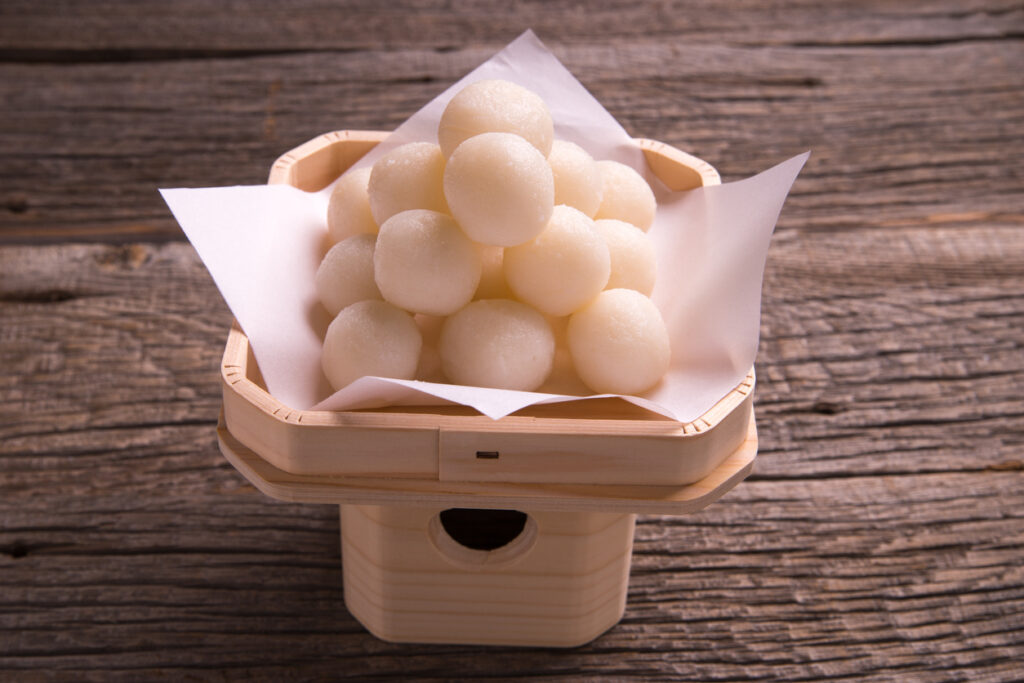 © Photo by iStock: Promo_Link
© Photo by iStock: Promo_LinkIn September, the popular tsukimi (moon-viewing) festival takes place to celebrate Autumn harvests and includes eating tsukimi dango under a full moon. Tsukimi dango are easily made at home using shiratamako (refined white mochi flour), which are rolled into small dango or balls and then boiled. There are several contemporary recipes for making the dango with special variations, such as kabocha (pumpkin) and satsuma imo (Japanese sweet potatoes). Also, since rabbits are traditionally associated with the moon in Japan, the dango can be designed with rabbit-like features.
Tsukimi dango are unique in that after they are prepared, they are arranged on a decorative altar before being consumed while viewing the full moon. Typically, fifteen dango are used to create a pyramid-like structure on the altar, with nine dango making up the first layer, four dango in the second, and the top layer consisting of two dango. To further decorate the altar, often susuki (pampass grass) is added to represent fall harvests.
Autumn Yokan
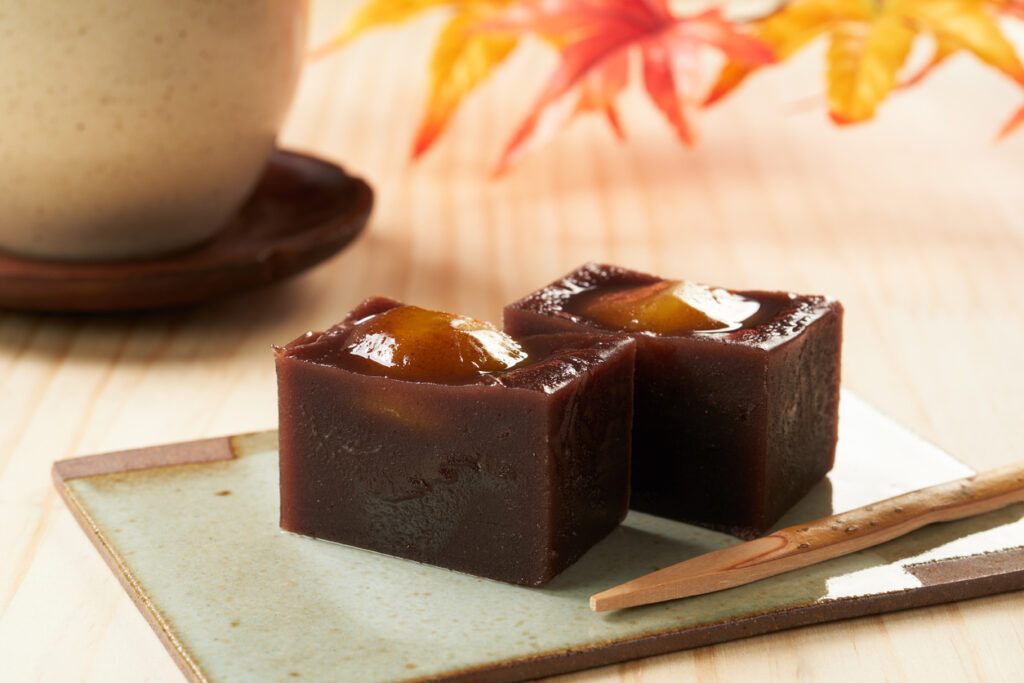 © Photo by iStock: manbo-photo
© Photo by iStock: manbo-photoYokan is a soft, jelly-like wagashi made from anko (sweetened bean paste) and agar that is formed into small rectangular bars and is often served as an accompaniment to green tea. During the fall season, imo yokan is a sought-after wagashi, which, unlike standard yokan produced from red bean paste, is made entirely from boiled sweet potatoes kneaded with sugar. Imo yokan is a popular treat because of how it highlights the robust and naturally delicious flavors of Japanese sweet potatoes. Another seasonal favorite is kuri yokan, which is made by adding large pieces of candied chestnuts to the base. In some prefectures with abundant chestnut harvests, like Nagano, kuri yokan can also be made entirely from chestnuts instead of mostly anko with chestnut pieces. Other fall specialties are kaki yokan, made from persimmons and kabocha yokan, made from pumpkin.
Autumn Kintsuba
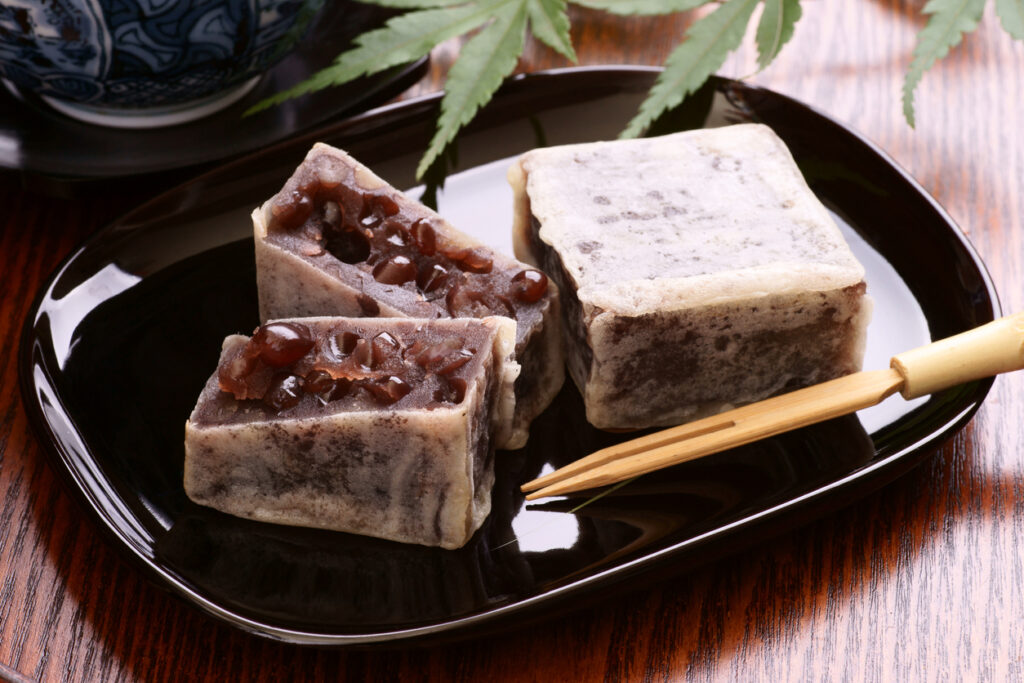 © Photo by iStock: Promo_Link
© Photo by iStock: Promo_LinkKintsuba has long been a popular wagashi in Japan dating back to the Edo period. Kintsuba is traditionally made using tsubuan (coarse azuki bean paste which includes the bean skins) that is pressed and cut into rectangular blocks. Each side of the block is then dipped into either rice flour or wheat-based batter and seared to create a crisp exterior. During the fall, kuri kintsuba, which are filled with pieces of sweetened and cooked chestnuts, are a go-to treat of the season. Imo yokan, described above, can also be turned into kintsuba by pressing, cutting and frying them, so be on the lookout for these fall renditions of this delectable wagashi.
Inoko Mochi
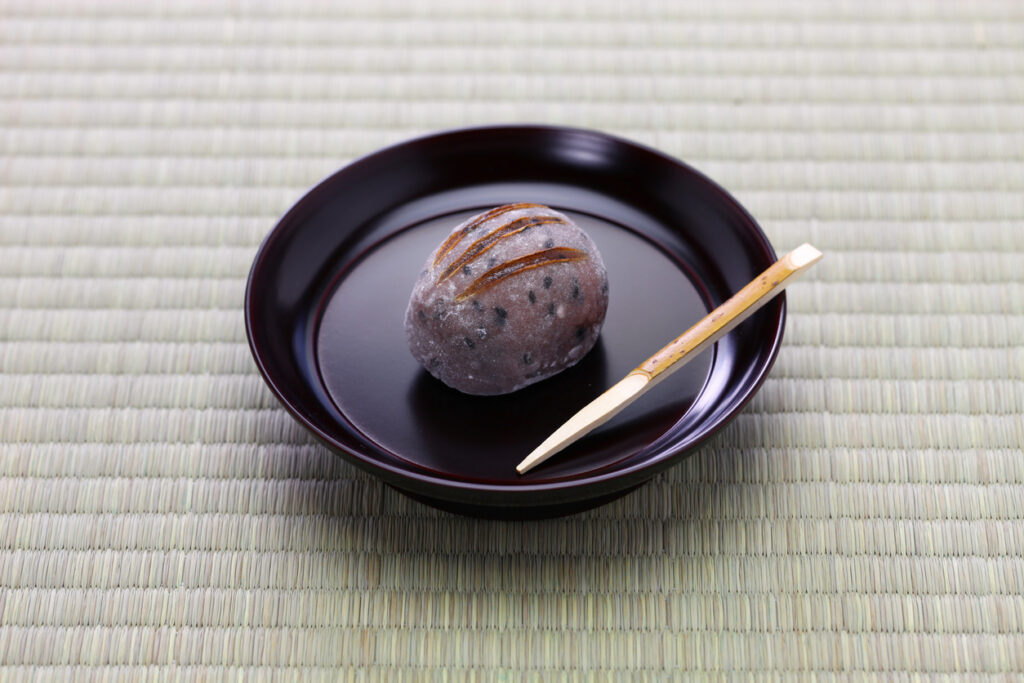 © Photo by iStock: bonchan
© Photo by iStock: bonchanInoko refers to the “day of the boar” in the traditional lunar calendar, which falls on the 10th day of the 10th month of the 10th hour; however, the exact date changes depending on the year. As such, in celebration of this day, it is customary to eat inoko mochi. This wagashi consists of a rice dumpling filled with sweetened red bean paste which is fashioned into an oblong shape to resemble a wild boar. Often, the mochi is colored brown and sesame seeds are added on top to imitate ears to further create the likeness of an inoshishi (boar). Originally based on a Chinese custom, inoko mochi became a popular confectionery among members of the imperial court during the Heian period in Japan as it was thought to expel evil spirits and bring prosperity.
Autumn Nerikiri
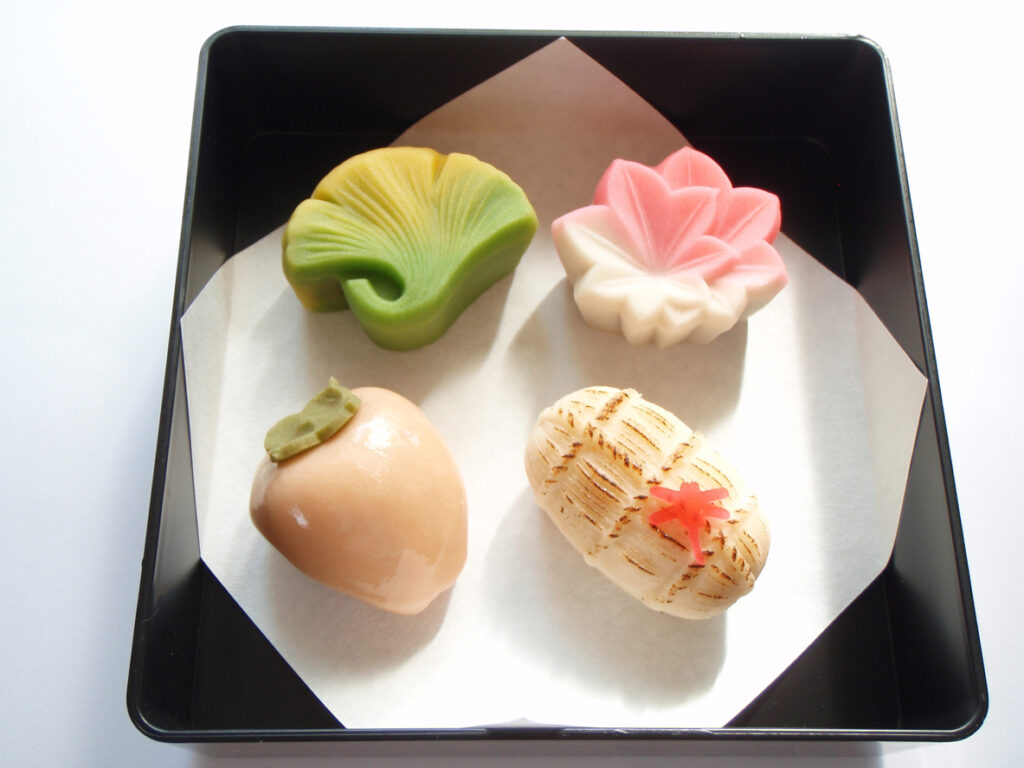 © Photo by iStock: yumi
© Photo by iStock: yumiAs we saw in the spring sweets and summer sweets wagashi articles, Nerikiri refers to unique wagashi that are beautifully constructed and artfully rendered. Nerikiri are often dyed in bright colors and hues and then crafted into intricate designs. The appearance of nerikiri changes depending on the time of year and during fall, the primary motifs shift along with the change in seasonal plants and produce. Some popular autumn inspirations for nerikiri designs are: momiji (Japanese maple leaves), ginkgo leaves, nashi (Japanese pears), kaki (persimmons), kuri (chestnuts), budou (grapes), ringo (apples) and kinoko (mushrooms).
Which of these wagashi will make its way into your autumn rotation? Enjoy the rich tastes of the season and get your camera ready for those stunning views of the changing leaves.












Leave a Reply